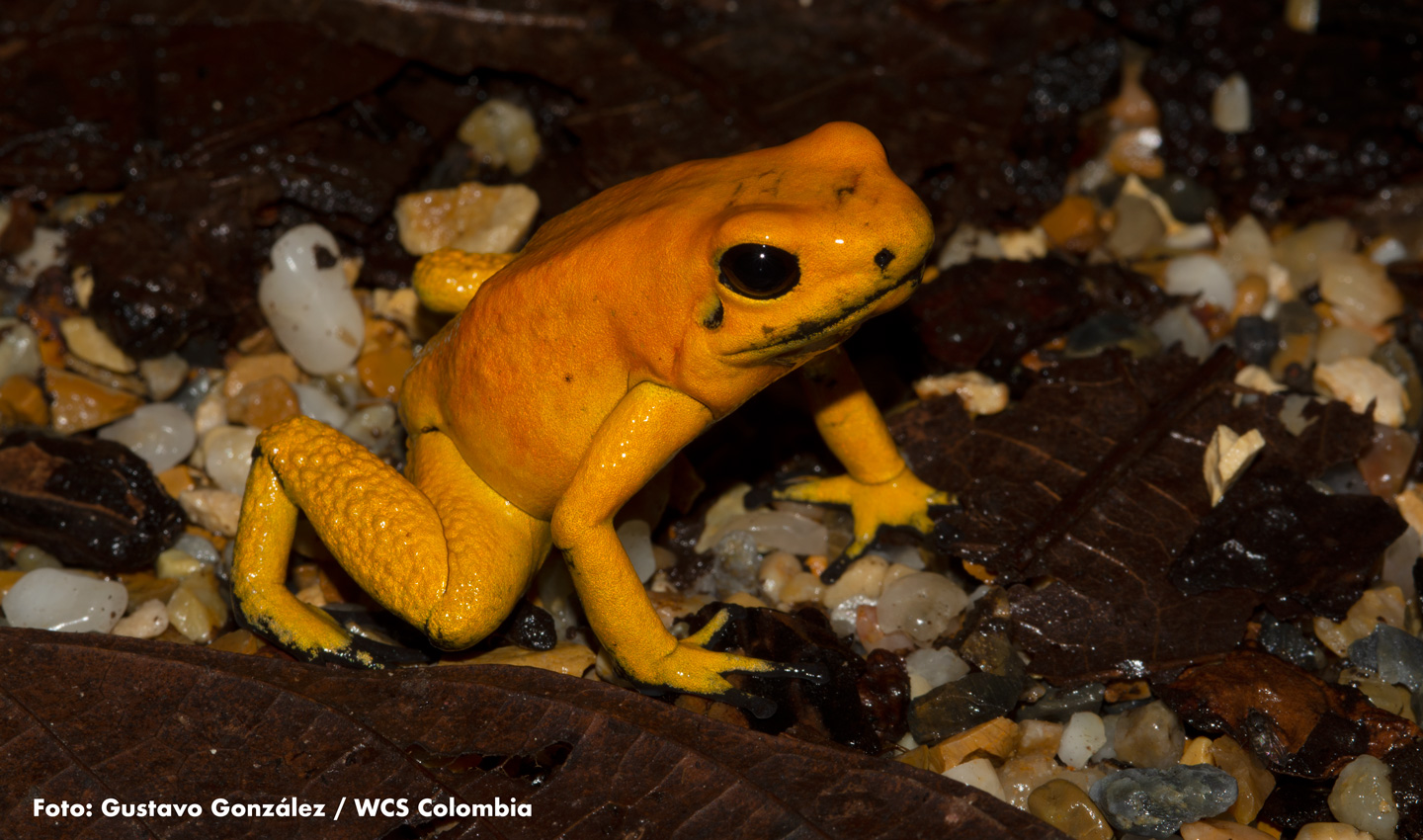 Phyllobates terribilis
Phyllobates terribilis
It is the most toxic frog in the world. The Eperara-Siapidaara Indigenous people of Colombia’s Pacific region have traditionally used its toxin by applying it to the tip of a dart, which is then used for hunting. This species can be found in the departments of Cauca and Valle del Cauca. According to the IUCN, it is classified as Endangered (EN) due to its limited extent of occurrence—1,473 km²—and threats such as deforestation, mining, and illegal crops.
 Phyllobates bicolor
Phyllobates bicolor
It is the second most toxic frog in the world. The Embera-Katío and Embera-Chamí Indigenous peoples have traditionally used it for hunting. As with Phyllobates terribilis, its toxin is applied to the tip of a dart when heading out in search of prey. This species is classified as Endangered (EN) by the IUCN, due to threats such as cattle ranching, mining, and illegal crops. It can be found in the departments of Chocó, Valle del Cauca, and Risaralda.
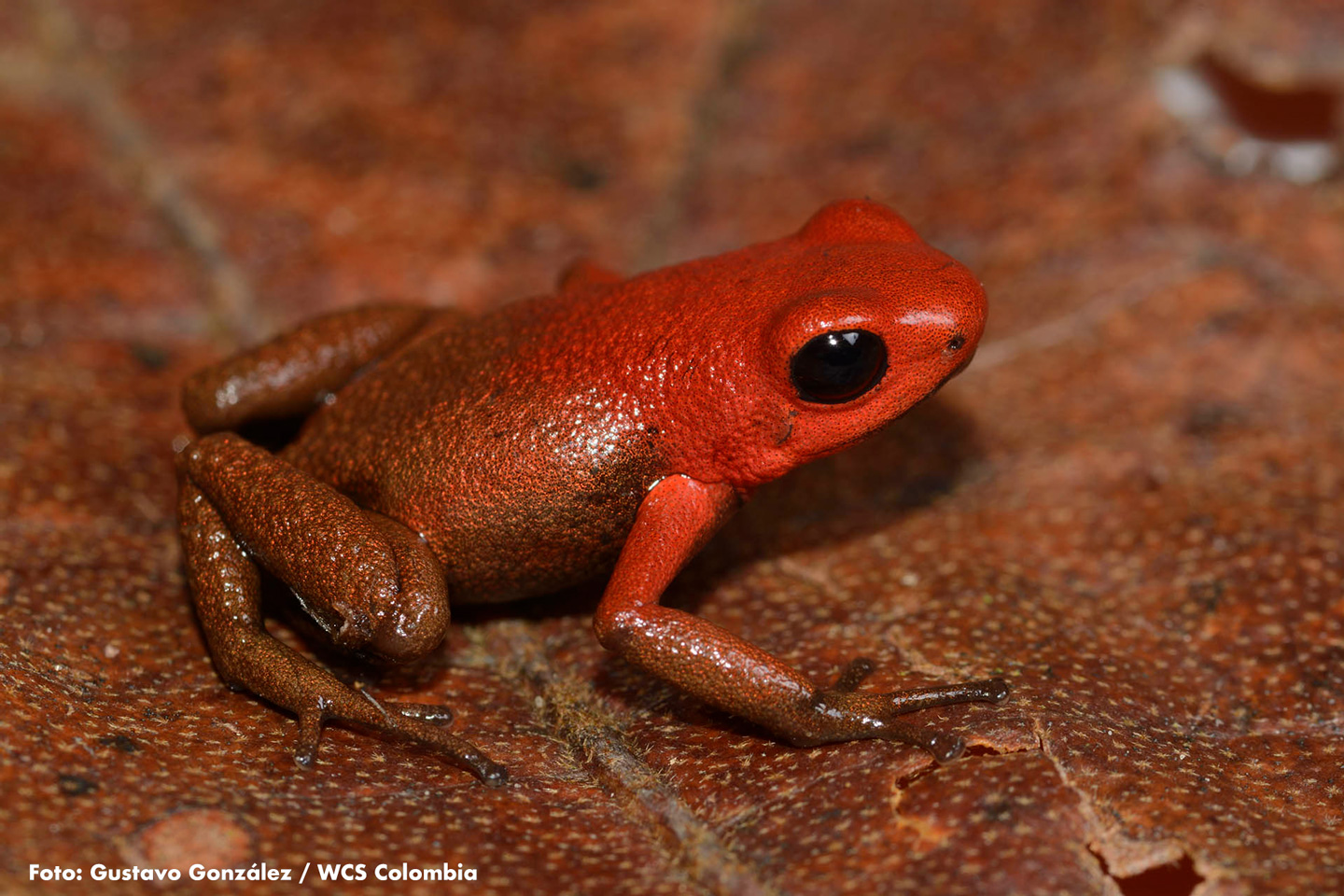 Andinobates daleswansoni
Andinobates daleswansoni
This tiny frog (averaging 18.8 mm in length) lives in well-preserved forests within the Selva de Florencia National Natural Park, in northern Caldas department. According to the IUCN, it is classified as Endangered (EN) due to its small extent of occurrence—approximately 641 km².
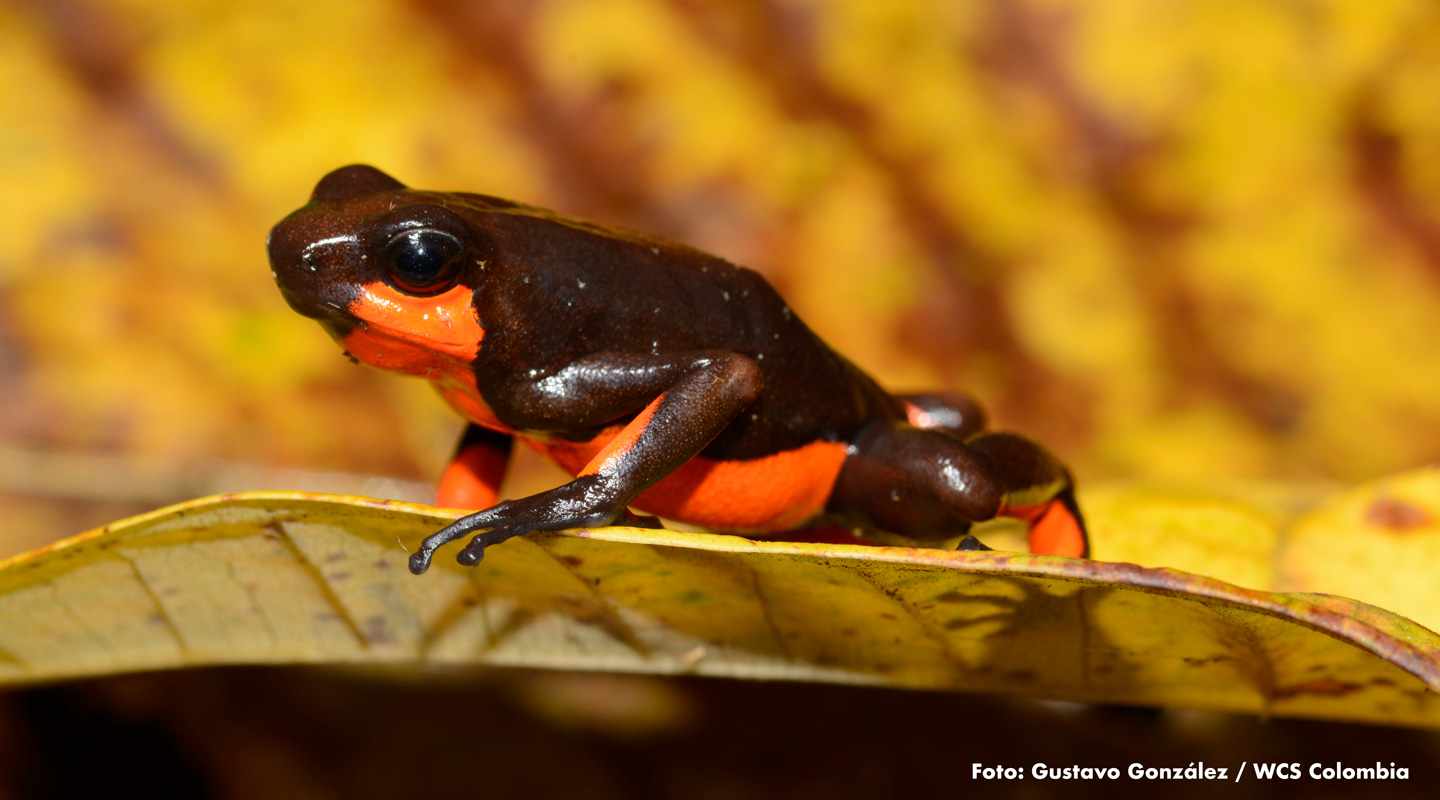 Oophaga histrionica
Oophaga histrionica
This species inhabits the rainforests of the upper San Juan River, with a range restricted to the department of Risaralda. Habitat loss, mining, cattle ranching, and agriculture are its main threats, leading to its classification as Critically Endangered (CR) by the IUCN. Likewise, its extent of occurrence—just 98 km²—can also be considered a threat to this amphibian.
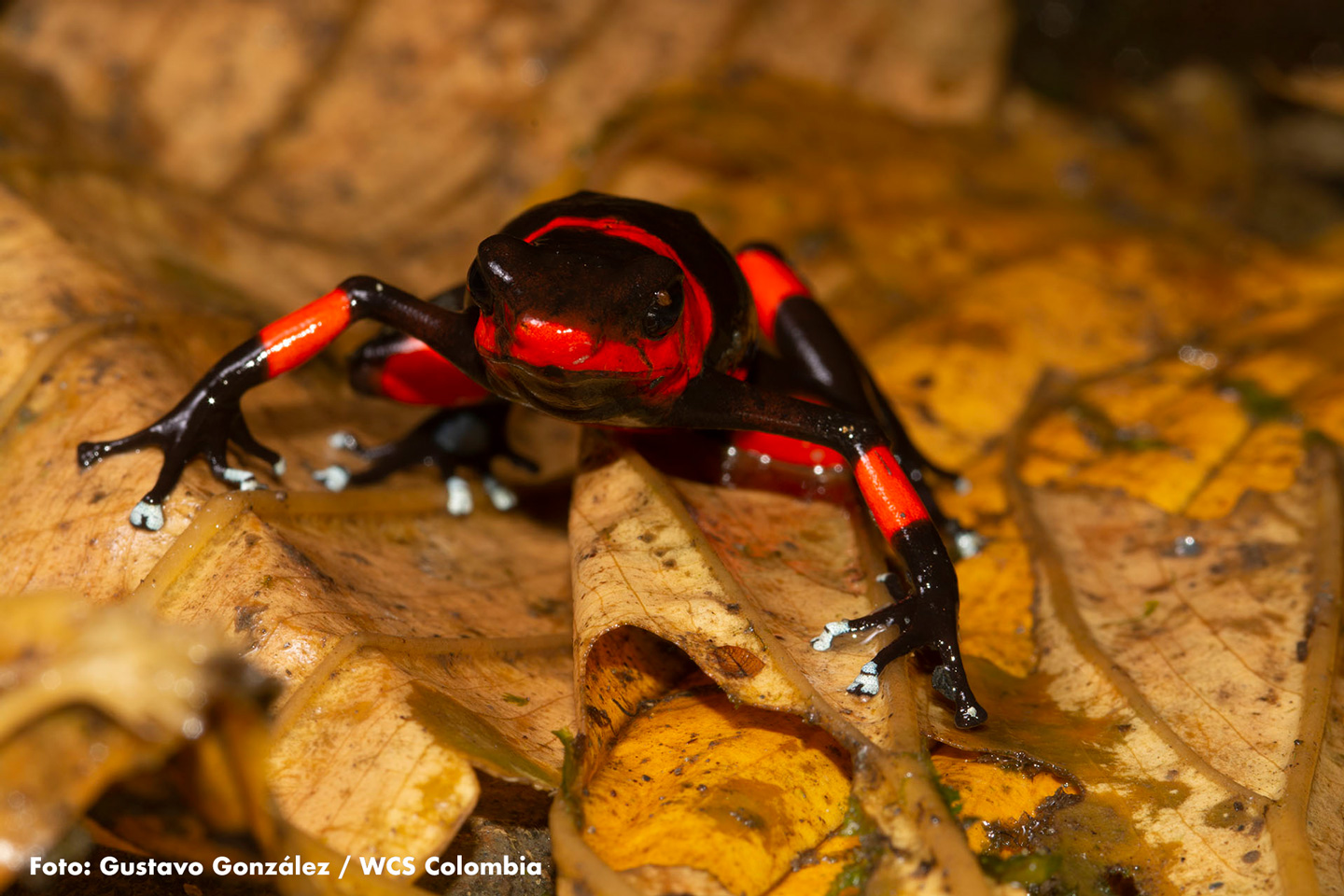 Oophaga lehmanni
Oophaga lehmanni
This species inhabits the Western Andes, in the municipality of Dagua, near the Anchicayá River (Valle del Cauca). It can also be found in Farallones de Cali National Natural Park. Habitat loss and degradation due to the expansion of the agricultural frontier, as well as deforestation to establish illegal crops, are among its main threats. In addition, its range is less than 10 km², within a severely fragmented area where forests are continuously declining. For these reasons, the IUCN classifies it as Critically Endangered (CR). This frog is also listed in Appendix II of CITES, indicating that it is a victim of the illegal wildlife trade.
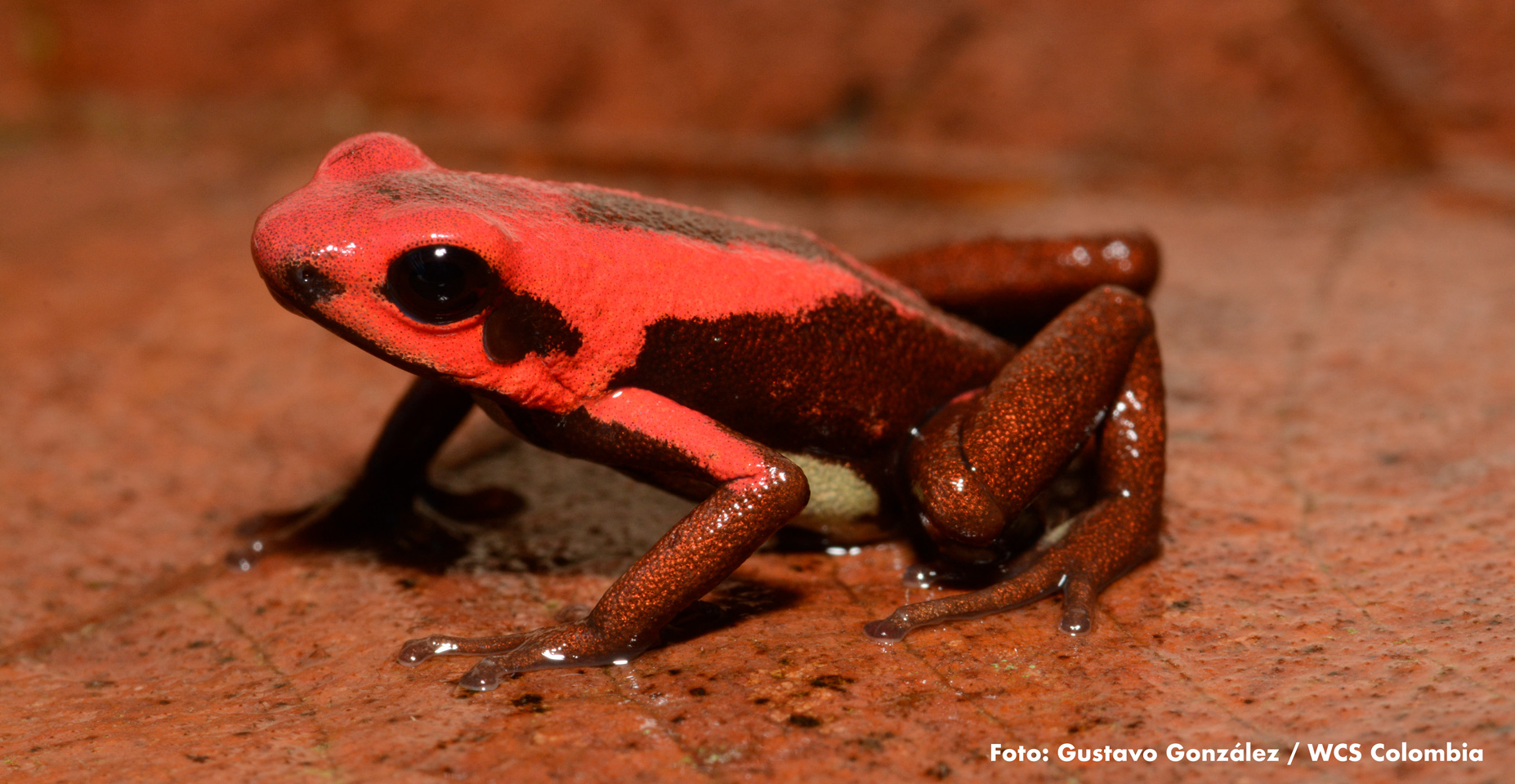 Andinobates bombetes
Andinobates bombetes
Also known as the ruby poison frog of Cauca. Males average 17.76 mm in length, while females reach about 18.63 mm. This species can be found in the departments of Caldas, Risaralda, Quindío, and Valle del Cauca. It is listed as Vulnerable by the IUCN, a status linked to its limited distribution area (8,267 km²) and the fragmentation of the ecosystems it inhabits.
*Extent of occurrence: a concept used by the IUCN, referring to the drawing of a polygon over the area where the species is distributed.
Traslated with AI support